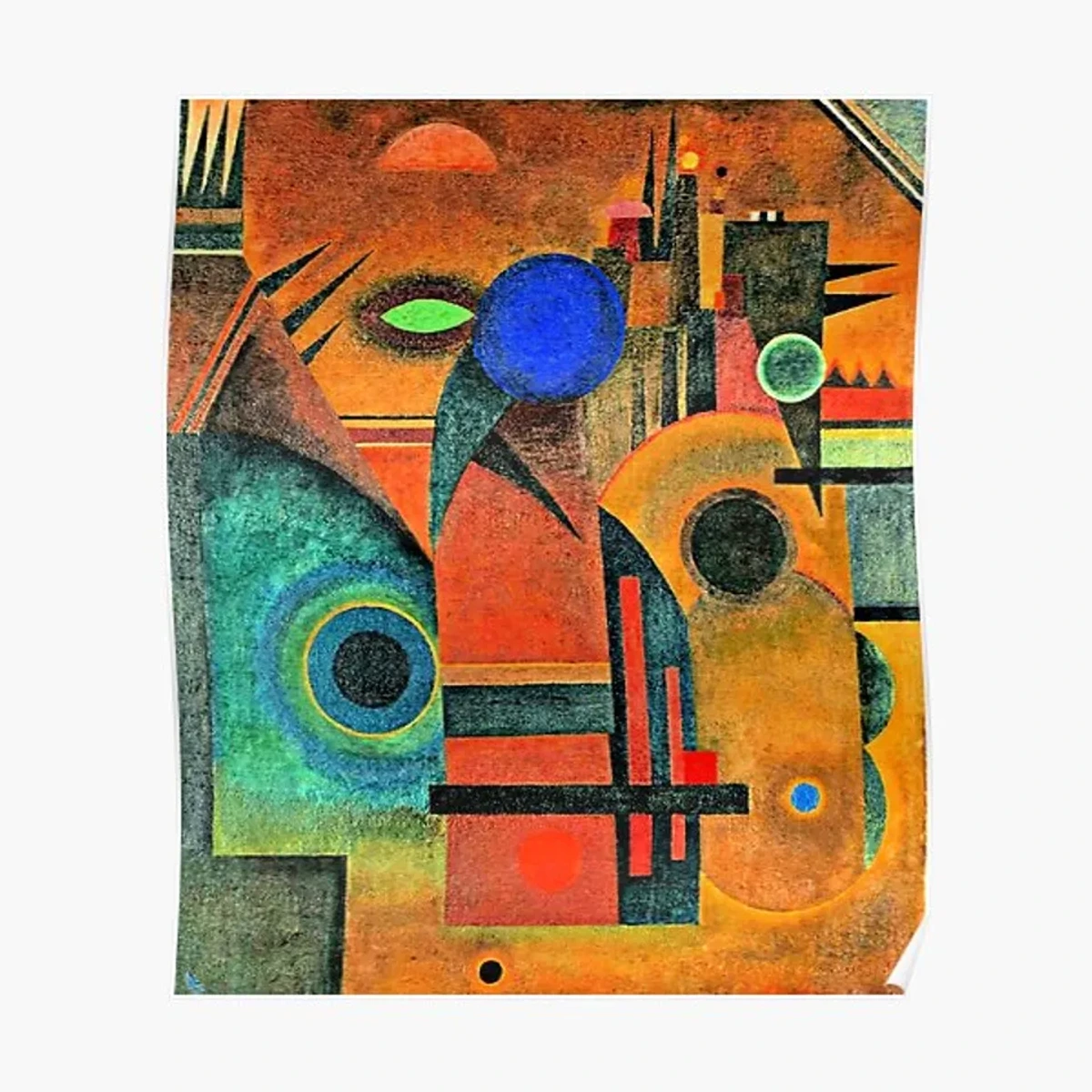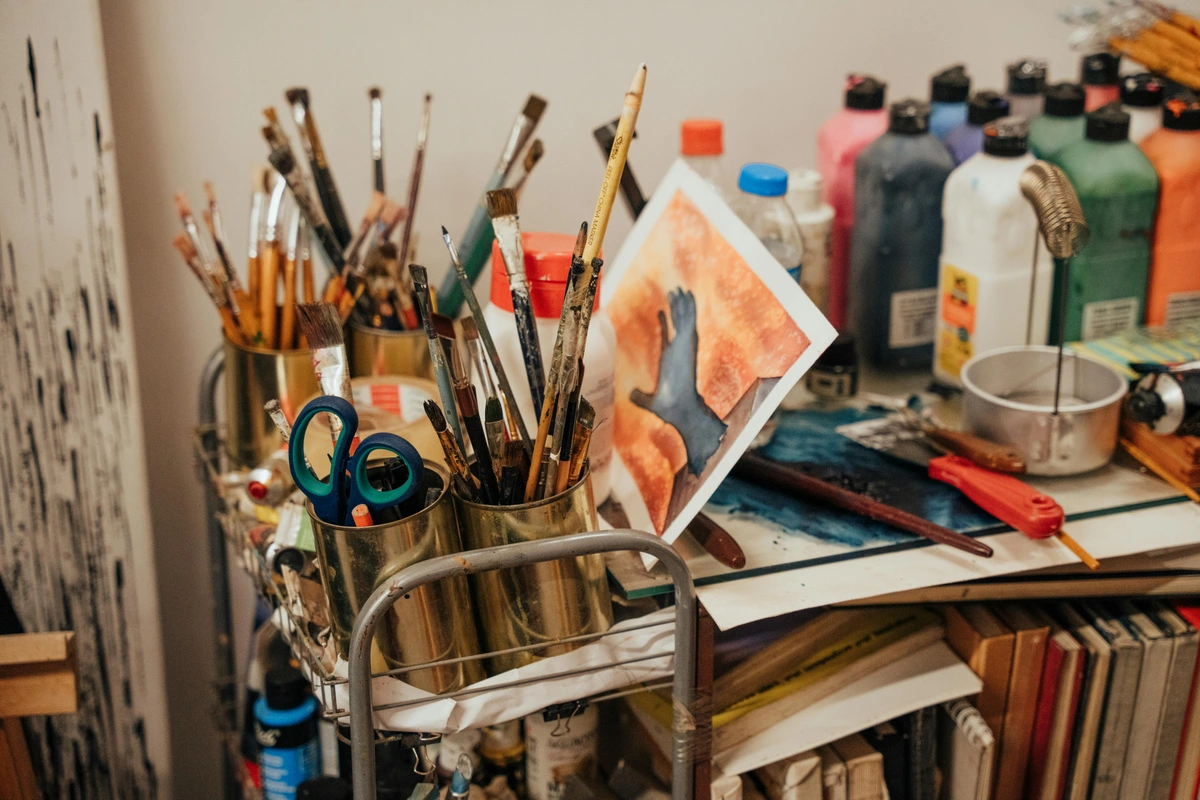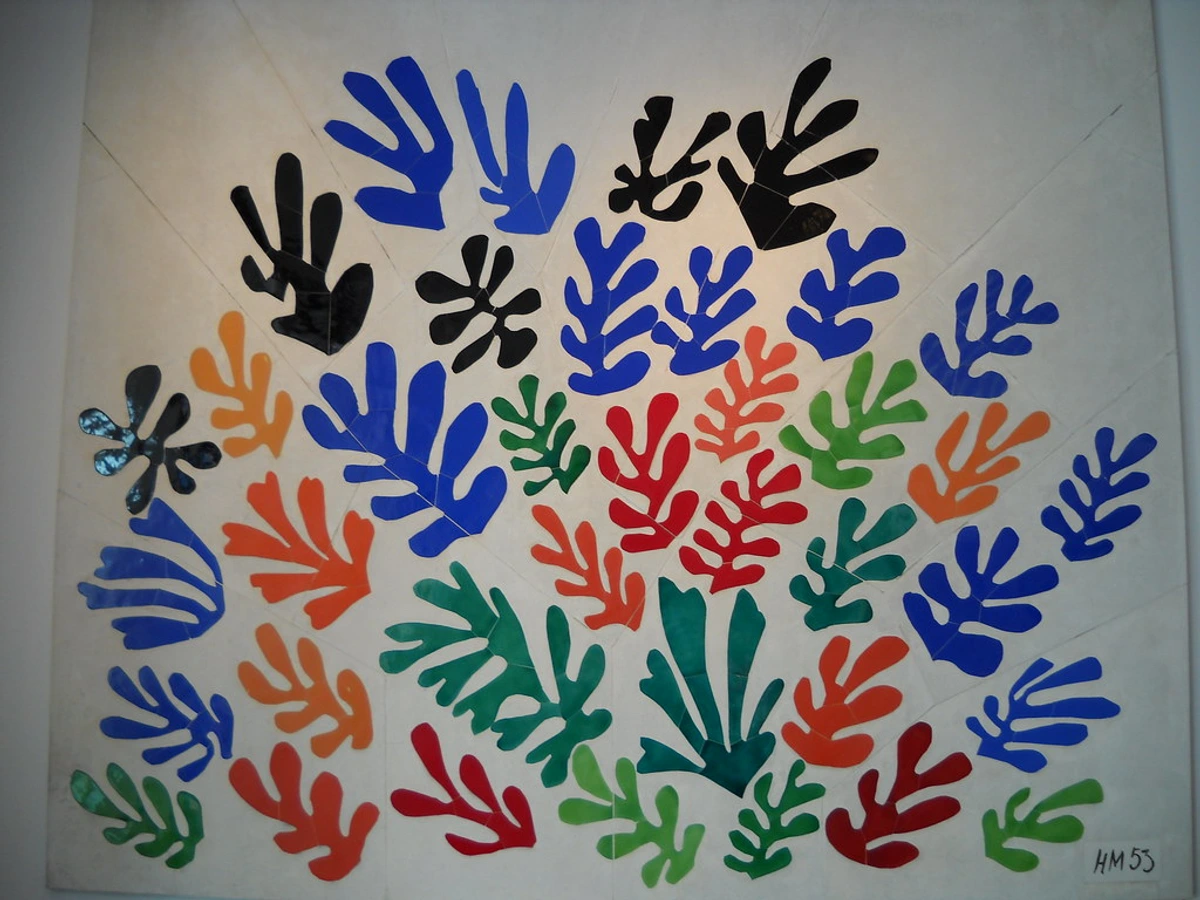
Abstract Art & Mindfulness: A Personal Path to Presence & Well-being
Discover a unique path to deep presence through abstract art. Learn how creating and mindfully viewing abstract pieces can quiet your inner critic, process emotions, foster self-compassion, and cultivate well-being amidst life's beautiful chaos.
Abstract Art as a Daily Practice: Cultivating Mindfulness Through Creation and Viewing
Life, as I've observed it, tends to unfold in a delightful, yet often overwhelming, chaos. We're all on this relentless quest for a sliver of peace, a moment of stillness, a tiny island of calm amidst the daily deluge of emails, to-do lists, and existential ponderings. And I, for one, found my rather unconventional island in the vibrant, sometimes messy, and gloriously unexplainable world of abstract art.
For me, mindfulness isn't about sitting perfectly still for hours, trying to quiet a mind that seems to have swallowed a marching band. It's about being fully present, non-judgmentally, with whatever is – observing thoughts and feelings without getting swept away. And abstract art? Well, it's simply art that doesn't try to be anything but itself – a raw expression of pure color, form, line, and feeling. Unlike representational art, abstract art emerged in the early 20th century, particularly through movements like Abstract Expressionism and Color Field painting, as a profound rebellion against literal depiction, a quest for pure expression and an invitation to experience. No hidden narratives to decipher, no perfect representations to critique, just an invitation to raw, unadulterated experience. This non-representational nature is precisely what makes it so uniquely suited for mindfulness: it bypasses the analytical, narrative-seeking part of our brain, forcing a direct, unfiltered engagement with sensation and emotion. Here, I share my personal journey of how these two seemingly disparate concepts – the pursuit of presence and the freedom of abstraction – decided to dance together, right there in my studio, and sometimes, even in my kitchen.

The Canvas Within: Cultivating Mindfulness Through Abstract Creation
"I can't even draw a stick figure!" – ah, the classic battle cry of the creatively intimidated. Trust me, I've uttered it more times than I care to admit. My first attempts at 'abstract' were, shall we say, less "Rothko" and more "toddler's tantrum after discovering finger paints." And that, my friends, is precisely the point. Mindfulness in abstract creation isn't about making a masterpiece; it's about making peace with the process of making. It's not about the destination, but the delightful, often wobbly, journey.
Before we dive into the creative exercises, let's address the elephant in the room: the fear of "Is my art 'good enough'?" I remember one particularly frustrating afternoon, staring at a canvas that looked like a muddy warzone, convinced I had no artistic bone in my body. But in abstract mindfulness, the answer is always yes, because the art is never the goal. The act of creation itself, the raw expression, is the reward. Judgment is merely another piece of mental clutter to observe and gently release.

You don't need a fancy studio, expensive brushes, or even a modicum of 'talent.' Your kitchen table, a cheap sketchbook, a handful of crayons, or even just a pen and paper – that's your perfectly legitimate artistic sanctuary. The beauty of abstract creation for mindfulness lies in its low barrier to entry and its high invitation to intuition.
Simple Starts: Exercises for Your Inner Explorer
Here are a few 'no-fail' ways to dip your toes into the abstract pool. Even 5-10 minutes can be transformative:
- Color Breathwork: Painting Your Mood: Grab some paints (watercolors are wonderfully forgiving) or even just colored pencils. Close your eyes for a moment. What color is your current mood? Don't overthink it. Is it a calm blue, a fiery red, a murky grey? Now, just dab, swirl, or scribble that color onto the paper. Don't try to form anything; just let the color flow as you breathe. Feel its texture, observe its spread, and simply notice any judgments that arise without clinging to them. This exercise is an instant emotional barometer and a fascinating visual diary, teaching you to observe without judgment. I remember one time, my 'mood color' was a surprising mix of murky green and bright yellow, which made me realize I was feeling both anxious and hopeful simultaneously.
- Pro-Tip: Try doing this exercise with your eyes closed for the first minute or so to truly connect with your internal feeling before visual representation.
- Line Dancing: Exploring Movement on Paper: Take a pen, any pen. Now, without lifting it from the page, just let it wander. Fast, slow, thick, thin, zig-zag, spiral. Follow your hand's impulse. Observe the lines as they intersect, overlap, and create new spaces. It’s a literal tracing of your internal flow, a dynamic meditation on movement and form. This practice can be especially effective at quieting the inner critic, as there's no "right" or "wrong" way for the line to move. You might even find yourself drawing without looking, a technique I often use to really quiet my inner critic and just feel the line.
- Pro-Tip: Experiment with your non-dominant hand to further disarm your inner perfectionist and allow for more raw expression.
- The Unveiling Blob: Embracing Imperfection: This is perhaps my favourite. Load a brush (or even a finger!) with paint and just make a blob. A big, unapologetic blob. Now, react to it. Add another blob, connect them, separate them, add a line. Let each mark inform the next, without a preconceived plan. It's like a visual conversation with yourself, where every 'mistake' is just an interesting new direction and an invitation to spontaneity.
- Pro-Tip: Before reacting, take a deep breath and simply observe the blob for a moment, letting your intuition guide your next move rather than a conscious decision.
This raw, uninhibited process is where the magic of mindfulness truly unfolds. You enter a 'flow state' – that beautiful space where time dissolves, and you're so engrossed in the activity that all self-consciousness fades, leaving only focused, effortless action. It's not just about losing track of time; it's a sense of energized focus, full involvement, and enjoyment in the process of the activity itself. This state reduces self-judgment and fosters a sense of effortless being, aiding in stress reduction and emotional processing. It's deeply sensory – the subtle drag of the brush, the smooth glide of a pencil, the earthy scent of paint.
Emotions can just... be. Without needing words, without needing a perfect explanation, they simply translate into form and color. It's a fantastic way to process what's swirling inside, one brushstroke at a time, fostering self-compassion. For those curious to delve deeper into the origins of artistic expression, developing your unique artistic style can offer further insights, as can embracing the art of intuitive painting: embracing spontaneity in abstract creation.

The Slow Gaze: Finding Presence in Abstract Art Viewing
If creation is the active exhalation of mindfulness, then viewing abstract art is its mindful inhalation. The most common question I hear when someone looks at an abstract piece is: "What is it supposed to be?" My mischievous internal response is usually, "Well, what do you feel it is?" Because the beauty of abstract art lies precisely in its lack of a 'supposed to be.' It's not a puzzle to solve; it's an experience to enter. While abstract art can be analyzed intellectually – understanding its historical context, artistic movements, or artist's intent – the mindful approach invites a different kind of engagement, one that prioritizes pure sensation and emotional response over cognitive interpretation.
Beyond Recognition: How to "Read" Abstract Art Mindfully
To truly engage with abstract art mindfully, you need a slight shift in perspective. Don't look for something; look at something. Here's a simple, step-by-step guide to a mindful viewing experience:
- Silence the "What is it?": Take a deep breath. Let go of the need for narrative, for a recognizable object or scene. Your logical brain can take a break. And if you find yourself thinking, "I don't feel anything" or "I don't get it," simply notice that thought, and gently bring your attention back to just looking.
- Observe without Judgment: Notice only what you see. The colors – are they vibrant or subdued? How do they interact? The lines – are they sharp or soft, flowing or jagged? The shapes – geometric or organic? The textures – smooth or rough? Just observe, like watching clouds drift by.
- Feel the Response: As you observe, notice what emotions, sensations, or memories, if any, arise within you. Does a color evoke calm? Does a line create tension? Does the composition make you feel expansive or contained? There's no right or wrong feeling. It's purely personal. I recall standing before a large, abstract piece once – a chaotic explosion of blues and yellows – and feeling an unexpected surge of pure, unadulterated joy, like the first warm day of spring. Another time, a piece with dark, swirling forms gave me a surprising sense of grounded calm, like looking into a deep, quiet pool.
- Let Your Eyes Wander: Allow your gaze to move freely across the canvas, following lines, jumping between colors, exploring the composition without a fixed path. It’s like a visual dance.
- Return to the Breath: Use the artwork as an anchor for your presence. As you breathe in, absorb the colors; as you breathe out, release any mental clutter. This practice is beautifully explored when decoding abstract art: a guide to finding meaning in non-representational works.
The Power of Pure Elements: Color, Line, Texture, and Form
Abstract art strips away the literal, leaving you with the fundamental building blocks of visual experience. It's in this raw, distilled purity that its potency as a tool for mindfulness truly shines.
- Color: More than just hues, colors carry profound emotional weight. Think of the calming embrace of a soft blue or the fiery energy of a bold red. Abstract art allows you to directly engage with the emotional language of color in abstract art, feeling its resonance without the distraction of a specific subject matter. The vibrant hues in the opening abstract expressionist painting truly exemplify this direct engagement.
- Line: Lines are energy. They can be fluid and graceful, jagged and aggressive, or stark and resolute. Observing the lines in an abstract piece can evoke a sense of movement, tension, or release, mirroring our own internal states.
- Texture: The tactile quality of paint, the visible brushstrokes, the layered surfaces – texture invites you to feel with your eyes. It adds a grounding, tangible dimension to the visual experience, connecting you to the artist's physical act of creation and rooting you in the present moment. Notice the rich, scraped textures and layered effects in the Gerhard Richter piece shown below. Dive deeper into the role of texture in abstract art: a sensory exploration.
- Form: While often less explicit than in representational art, form in abstract pieces refers to the overall structure, balance, and relationship of shapes and elements. This could be how a large, dominant shape interacts with smaller, clustered elements, or how a series of forms creates a sense of depth or flatness. For example, think of a large, stable rectangle anchoring a flurry of smaller, dynamic circles – how does that make you feel? Observing how forms interact – whether they create harmony, tension, or a sense of stillness – can be a deeply mindful act. It invites an appreciation of composition beyond specific objects, enhancing your capacity for non-judgmental observation.
Here’s a quick comparison of how these elements engage you mindfully:
Element | Mindful Viewing Benefit |
|---|---|
| Color | Emotional resonance, mood reflection, pure sensation |
| Line | Sense of flow, energy, direction, dynamic presence |
| Texture | Tactile connection, grounding in the present, depth |
| Form | Appreciation of balance, harmony, or tension, stillness |

Abstract Mindfulness in Your Everyday World
So, you’ve dipped your toes in the abstract pool and felt the calming current – but what if you don't have time for a full studio session or a gallery visit? The beauty of cultivating mindfulness through abstract art is that its principles can be woven into the fabric of your daily life, transforming mundane moments into micro-meditations. This aligns perfectly with abstract art's original purpose: to invite new ways of seeing and experiencing the world beyond literal representation.
Micro-Meditations: Integrating Art into Your Day
- Mindful Doodling: Next time you're on a boring call or in a long meeting, instead of scrolling, grab a pen and paper. Let your hand create abstract patterns, lines, or shapes. Don't try to draw anything specific; just let it flow. It's a subtle way to stay present and channel restless energy.
- Observing Everyday Abstraction: The world around us is a canvas of unintentional abstract art. Notice the cracked pavement, the peeling paint on an old wall, the intricate patterns of moss on a stone, the swirling foam in your coffee, or the ever-changing forms of clouds in the sky. These are all abstract compositions waiting for your mindful gaze. I once spent a good five minutes mesmerized by the accidental abstract masterpiece formed by the residue on the inside of my coffee cup after a particularly vigorous stir – it was a tiny universe of swirling browns and creams. Even sharing a moment of mindful observation with a friend over a fascinating cloud formation or an intriguing piece of graffiti can deepen connection and presence.
- Art as a Screen Break: Instead of mindlessly refreshing social media, take a mindful break. Keep a favorite abstract art print on your wall or desk, or have a digital collection you can quickly access. Spend a minute or two simply looking at it, letting your eyes wander, and noticing your breath. It’s a wonderful way to reset and return to presence. My own home is filled with my art, and sometimes, even I find myself just staring, lost in the lines and colors. It's truly transformative how abstract art for modern minimalist homes: a guide to curated spaces can create pockets of calm.
You can even transform your own living space into a gallery of calm by exploring my art prints that speak to your soul. Imagine walking into a room and being greeted by an intentional splash of color and form that grounds you.

Navigating the Inner Landscape: When Mindfulness Feels Elusive
But what happens when the mind refuses to quiet, or the brushstrokes feel forced? Sometimes, despite our best intentions, the mind still races, or the artistic act doesn't immediately usher in calm. That's perfectly normal, and part of the practice. Mindfulness isn't about stopping thoughts or feelings, but about observing them without judgment. If your mind is busy, notice that. If you feel frustrated, notice that too. I've had countless days where my brush felt like a lead weight and my mind a buzzing hive – and those are often the days I learn the most about gentle persistence. Simply return your attention gently to the breath, the color, the line, or the form, again and again. Each return is a strengthening of your mindful muscle. If you find yourself truly stuck during creation or viewing, try switching mediums entirely for a moment, or simply imagining the desired emotional outcome before returning to the physical act. This gentle persistence is key to cultivating true inner peace, a concept also explored in mindful moments: how abstract art can be a gateway to inner peace and mindful viewing: how abstract art can enhance your daily well-being.
The Unfolding Canvas of Life
So, there you have it. My somewhat rambling, deeply personal take on how abstract art, in all its enigmatic glory, offers a surprisingly direct path to mindfulness. It's not about being an 'artist' in the traditional sense, or even about 'understanding' abstract art in an intellectual way. It's about being present, truly present, with something beautiful, something raw, something that invites you to feel rather than just think.
The long-term impact of integrating abstract mindfulness into your daily routine extends far beyond moments of calm. It can subtly enhance your creativity in other areas of life, improve your problem-solving skills by encouraging non-linear thinking – I've personally found it helps me approach complex issues at work with more flexible and intuitive solutions – and foster a more nuanced appreciation for the subtle beauty and patterns of the world around you.
Abstract art, both in its spontaneous making and its open-hearted observing, offers a unique gateway to that elusive stillness we all crave. So, next time you encounter an abstract piece, instead of asking "What is it?", try asking "What do I feel?". Or even better, grab a piece of paper and make your own wobbly lines. The journey itself, I promise you, is the most profound art of all.
My own journey is always unfolding, with new strokes and unexpected colors. You can explore my artistic timeline or even visit my physical collection at the museum in 's-Hertogenbosch if you're ever in the Netherlands. Perhaps our paths will cross, either on canvas or in consciousness. How might abstract mindfulness unfold for you? The canvas is yours to explore.




